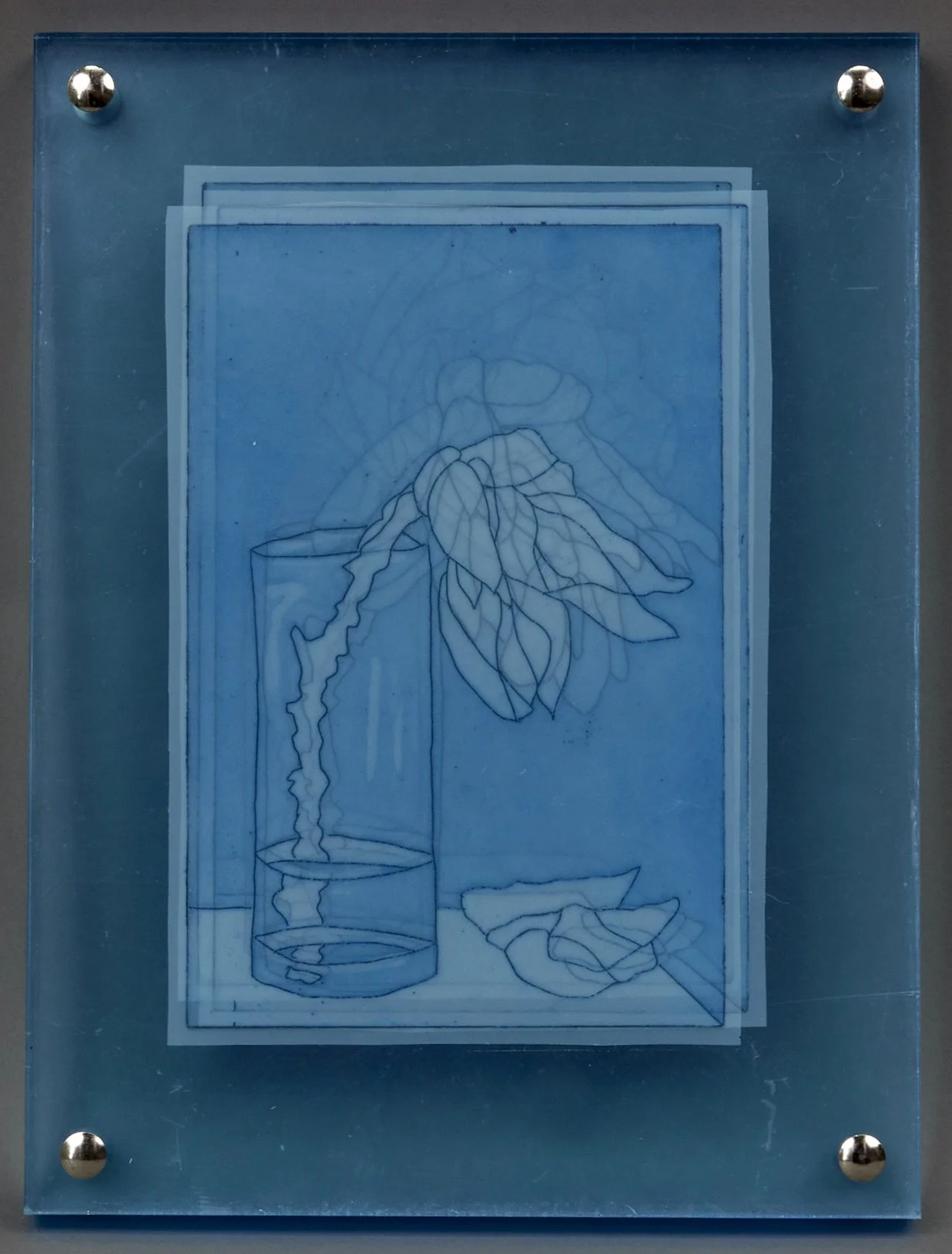The Binding Problem
Etchings printed onto acetate
H 25cm, W19cm, D2cm
Two overlapping line drawings of the picked flower, an hour apart, are etched in blue. Three such etchings, capturing the images one day after the last, are printed onto clear blue acetate and framed, one on top of the other, in clear blue Perspex. A series of overlaying images of the flower, first opening and then wilting. The piece follows time through movement.
The flower is dead the moment it is picked, yet it continues to bloom. A study into the space beyond life.
In this piece, I was thinking about a specific issue in neuroscience. Our inability to understand consciousness. The Binding Problem.
Many neuroscientists think there is more to the content of consciousness than brain activity. An element of consciousness lies beyond the human body, and this component of consciousness is the continuum that exists after we die.
